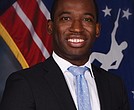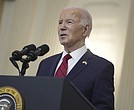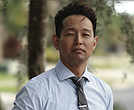Restoring the peace
9/15/2017, 12:09 p.m.
The escalating bloodshed and death toll in Richmond is alarming, its latest dead and wounded ranging in age from 9 to 57.
No longer can Richmonders feel immune or insulated from the mayhem simply because they don’t live in Gilpin Court or Highland Park, the neighborhoods where the latest carnage took place. The magnitude and seriousness of the problem demands the attention and unified efforts of all segments of the community — from law enforcement to government, to the courts, schools, churches and nonprofit organizations, to individuals who live in this city.
While it is easier to leave these problems at the feet of Richmond Police Chief Alfred Durham and Mayor Levar M. Stoney, or to blame the people living in the affected communities who are fearful to come forward with information, none of us can escape the responsibility of trying to help change the grisly course that has overrun the lives of our fellow Richmonders.
Richmond is not alone in this struggle. Other cities, including Chicago and Los Angeles, have seen growing violence and escalating homicide numbers in recent years. Richmond went through a similar spate of violence in the 1990s, when we earned a spot on the infamous list of “murder capitals” in the United States because of our gruesome murder rate.
We don’t want to go back to that time.
Instead, we need a concentrated effort running along parallel tracks to combat the problem. We offer this range of efforts that have been talked about and/or employed in Richmond and other cities to stem the violence:
• Crack down on rules and regulations the Richmond Redevelopment and Housing Authority already has in place for public housing residents.
• Use daily data analytics and conference calls among police precinct commanders to concentrate law enforcement officers daily in crime “hot spots” to help show police presence, boost residents’ feelings of security and quell violence.
• Push for more stringent gun laws to make it harder to obtain firearms and root out gun trafficking networks.
• If money is a motivator for people to turn to crime, use money to motivate people to stop crime by offering larger monetary incentives provided by private sources for information in high-crime neighborhoods.
• Use our local university resources — Virginia Commonwealth University, Virginia Union University, University of Richmond and J. Sargeant Reynolds Community College — to produce a joint, in-depth study on the causes of the violence. Would such a study uncover something officials may have overlooked? A university coalition, in concert with public and private interests and people in the community, could craft a comprehensive, multiyear plan to help solve some of these problems.
• Create a focused, joint effort by the city and the private business community to offer an alternative to crime — a job — through specialized recruitment and placement efforts for people living in high-crime neighborhoods.
• Boost education and job training efforts for residents in public housing communities.
• Offer conflict resolution training for all grade levels in public schools, with specialized programs provided by churches and other nonprofit groups to residents of neighborhoods in need.
• Enhance and support after-school and evening sports and interest programs at area community centers.
• Provide more parent training programs and mentoring programs for youngsters.
• Provide more funding for mental health services and drug rehabilitation.
• Use libraries more as centers for community learning and activity.
This list is just a starting point for community consideration. Solutions and efforts must be comprehensive, not piecemeal, and must involve everyone for peace to return to our city.
What affects one part of our community affects us all.






